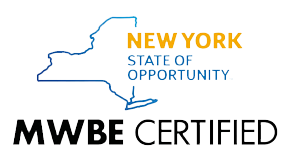With the New Year less than four months away, most businesses are putting together their annual marketing budgets and strategies. This could be one of the more challenging assignments you’re tasked with—given current supply-chain challenges and the inflationary environment in which we find ourselves.
But if history has taught us anything, it’s simply this: the market can (and will) change on a dime, but savvy business owners can bounce back and even thrive during an economic downturn.
The reason? Those who invest in effective marketing strategies will remain front and center in their customers’ minds. Those who don’t, will fade into the background.
Before you can start advertising effectively, you first need to build a comprehensive marketing plan and budget—and stick to it!
Building a Marketing Budget for 2023
No matter how many times you’ve planned a marketing budget, the process can always feel a bit overwhelming. To get started, here are 3 important questions you’ll want to ask yourself (and your team):
1) How Did Last Year’s Budget Impact Performance?
One of the best ways to plan where you’re headed is to first understand where you started.
Before you begin strategizing for 2023, have your team review this year's goals and performance metrics.
This will allow you to identify the following:
- Which business goals are being met?
- What channels generated the most engagement?
- Which campaigns led to higher conversions?
- Which platforms left you with little-to-no ROI?
You may discover, for instance, that the average cost per click and cost per conversion has increased significantly on Facebook ads, so you may look for alternative opportunities, such as TikTok Ads that could be more cost efficient. Or perhaps, certain campaigns that featured seasonal promotions outperformed your product/general branding campaigns. So, in 2023, you may want to incorporate more seasonal promotions into your plan.
Once you identify your marketing strengths, you should budget to invest more time and money into these strategies or platforms, and less into those that don’t generate measurable ROI.
With that said, it’s essential that you make measuring ROI with accurate data reporting a priority in the New Year, if you aren’t doing so already.
2) What Are Next Year’s Marketing Goals?
After you’ve tracked your successes and noted areas for improvement for the current year, the next step is understanding if your marketing goals are the same, or if they will evolve for the coming year.
We recommend discussing your top 3-5 marketing goals as a team. This might include:
- Building more brand awareness
- Improving website traffic and conversions
- Re-engaging past customers.
- Increasing content marketing efforts
- Refreshing your messaging to focus on providing more value
Next, consider which types of channels/resources you’ll need to achieve these goals. If you’re planning to improve website conversions, you may decide to invest in a direct audience targeting campaign that drives traffic from a series of paid ads.
For building brand awareness, you may consider launching an integrated marketing campaign that includes various types of advertising, such as programmatic, social media, billboards, podcasts, and Influencers to help enforce your messaging and demonstrate your company’s expertise and leadership.
Looking for effective ways to re-engage past customers? Consider building an email campaign that provides new incentives for old subscribers to reconnect with your brand.
Once you decide on your top marketing goals, you can start to strategize how you’ll achieve them with both the resources you have now—or perhaps—ones you’ll need to invest in further, such as outsourcing to an agency, working with an influencer, or bringing in new technologies.
3) Does Our Budget Align with These Goals?
Lastly, consider your proposed marketing budget. Depending on size, revenue, and goals, budgets can vary greatly between industries, so do a little research on what similar companies in your industry spend. A trade or association group should be able to provide some guidance.
In addition to analyzing ROI metrics, be sure to understand if, and where, you went over budget. This may have resulted from one of two things:
- Either you didn’t set a realistic marketing budget to cover the investments required; or more likely,
- You were a bit too optimistic on what you could achieve with a fixed budget.
Perhaps one of the most difficult aspects of creating a marketing plan and budget is considering the hidden costs and additional resources required to successfully execute each of your strategies. Start the budget process early so that you have time to consider the additional resources.
Short form video content like TikTok, Instagram Reels, and YouTube Shorts, for instance, continue to gain impressive momentum, affording brands of all sizes and budgets the opportunity to connect with audiences in their communities, across the country or even across the globe. Though this popular format first claimed its fame among GenZ users on TikTok, it’s slowly grabbing the attention of older age groups, too.
But before you start creating short form video content, consider the other costs and resources involved in running a successful ad campaign and brand presence on different platforms. You’ll need to:
- Create new, relevant content regularly
- Build, edit, and launch ads
- Manage user comments and engagement
- Stay up to date on hot trends/challenges and sounds
- Analyze data to improve ad performance
- Understand the algorithms of each platform to maximize success.
If you already do this type of work for other platforms, you know how much strategy, time, and energy it requires. In fact, the more investment you put into these platforms, the greater the ROI. So, be sure to take into consideration any additional costs it will require to be successful.
Ready to Build Your Marketing Plan and Budget?
To advertise effectively, you first need to build a comprehensive marketing budget and strategy. If one of your marketing goals is to improve conversions with better marketing communications and data reporting, East Shore Marketing can help!
As leaders in integrated marketing, we have the tools, SMEs, and cost-effective strategies to connect, engage, and convert more customers!
To learn more about our capabilities, we invite you to request a consultation today. We’d love to help you build a creative marketing strategy that means business—and a better ROI.

